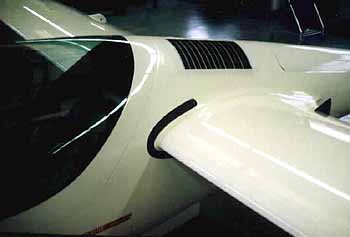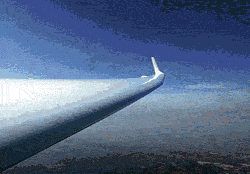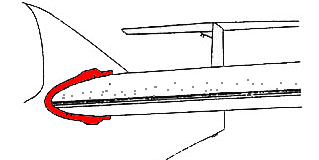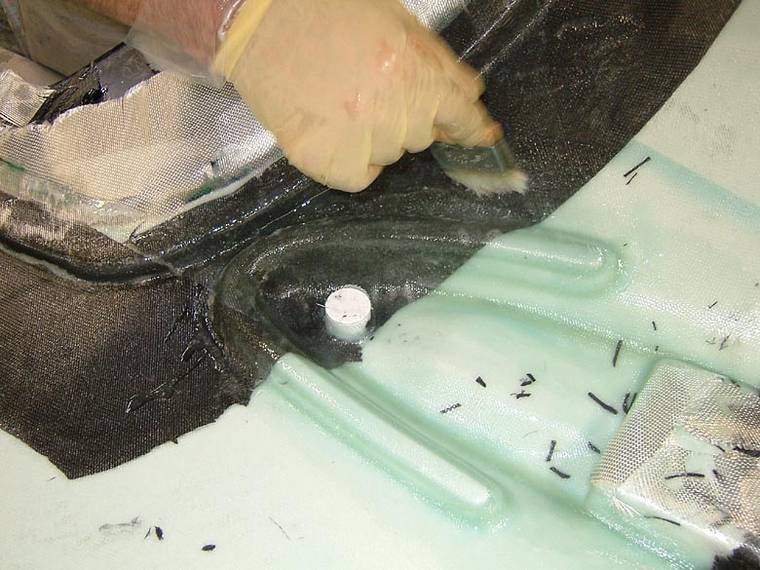A Bug Cleaner with “Garage”
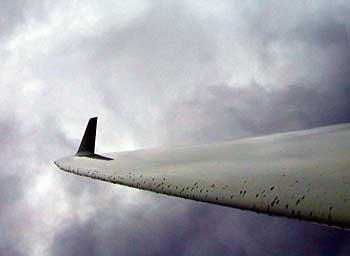
Obviously the profile on the left will not work laminar any longer. It is completely disturbed.
Because bugs cannot be avoided, and spraying the wing nose with “Autan” is not effective, we have to live with this fact. But one can remove most of the bug contamination in flight by means of a bug wiper. This is especially important for contest pilots.
On the other hand this causes additional drag from the yoke of the bug wiper, which protrudes into the air stream next to the fuselage. Some new investigations show that this causes a substantial additionally drag!
What would be more sensible than to build a “garage” for the yoke?
But that is easier said than done:
An appropriate section would have to be cut out of the fuselage, but unfortunately the rear rib is in the way. However, while planning the consummate safety cockpit for the DG-808 we provided a cutout in the rib and extra room for the machinery such as the electric motor, the drum for the wire and the electronics.
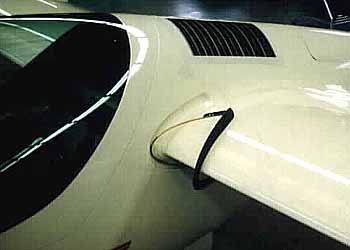
If you are not quite sure if you would like to install a bug wiper at a later date you should order the “garage” option as a precaution, because it cannot be installed later.
BTW: The company BWS Pirker & Storka as an own web-site too.
– friedel weber –
translated by Albin Schreiter, CDN
IDAFLIEG- Gauging
In 2002, the IDAFLIEG conducted some gaugings during their summer-meeting to analyze the influence of detached bug wipers on lift/drag ratio of a glider.
The results are not fully discussed so far , and yet are not to be published . Anyhow, it is known that the drag of detached bug wipers – the ones that are not retracted into a garage is unexpectedly high, resulting in a measurably higher sink rate.
You will be able to find more details here as soon as any official figures will be published
On the same subject there is the following article in the “Aerokurier”:
DG-808C with Bug Wiper Garage
The 18 m sailplane DG-800 can now be ordered with retractable bug wipers.
DG Flugzeugbau of Bruchsal is the first sailplane and motor glider manufacturer to offer performance conscious pilots the chance to fly almost always with bug wipers. With this wiper the contamination of the wing nose and the attendant loss of performance can be minimized in flight. The “garage” for the bug wiper makes it possible to retract the wipers, which at rest normally cause considerable drag at the wing root, and to park them in a favorable aerodynamic position.
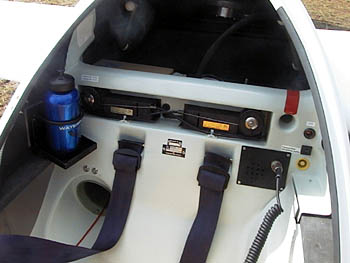
The integration of the bug wipers extends into the cockpit. Only the actuator switch reminds one of the bug wiper system. The electric rewind motors for the retraction of the wipers. which are extended by the air stream in flight, are mounted in the rear cockpit wall. They do not interfere with the work area of the pilot.
Another thing:
If you have separate wing sections, you cover the gap between them with wing tape. If you do not disassemble every day, the tape at the leading edge can pull in slightly and the wire of the bug-wiper can catch in this little groove and perhaps cut through the tape.
Our suggestion:
Get a clear, stiff piece of cellophane. (Havent you wanted to give yourself a new shirt for some time? The collar stiffeners are perfect for this.) Cut two strips of this cellophane about 1 x 5 cm and lay these on the leading edge at the parting point under the wing tape. Then the wire wont drop into the small ditch in the tape and will glide over this point.
BTW: It is recommended to use the bug wiper at a speed of about 10-120 km/h (50-70knots) flying straight forward in quiet air.
If you fly very slow, it will not work.
If you fly too fast, the bug wiper can be lost.
And do not try to test a motor operated bug wiper on the ground to avoid “rope jam”!
Bug Wiper Garages for the LS10
The prototype was equipped with “normal” bug wipers. But already the first fuselage designed by DG have got our Bug Wiper Garages to reduce drag. This feature will be standard. If anybody does not need it, he will get covers for the garages.
Here you see a photo of the building process of the fuselage.

